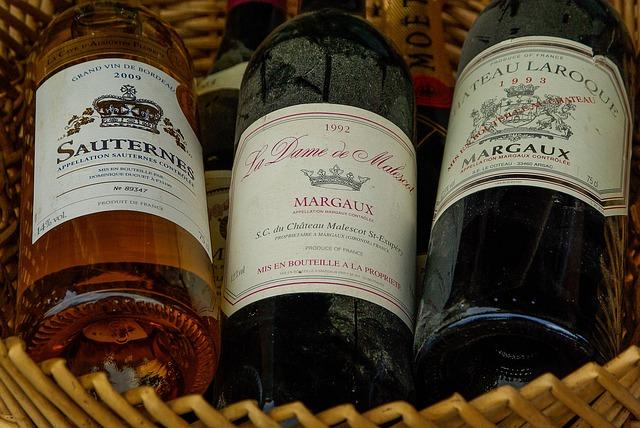Title: Navigating the Vineyards: Your Guide to Choosing the Perfect Bordeaux
As the world of wine continues to expand, Bordeaux remains a timeless staple, captivating enthusiasts and casual drinkers alike with its rich history and diverse offerings. With countless options available, from robust reds to crisp whites, selecting a Bordeaux that aligns with your palate and budget can be a daunting task. This article aims to simplify the process, providing insights into the characteristics that define Bordeaux wines and practical tips for making informed choices. Whether you are a seasoned connoisseur or a newcomer to the scene, our guide will help you navigate the complexities of Bordeaux, ensuring you find a bottle that resonates with your taste and complements your financial plan. Join us as we explore the nuances of this celebrated wine region and discover how to enhance your dining experience—one pour at a time.
Exploring Bordeaux Varietals to Match Your Palate
When diving into the rich world of Bordeaux wines, it’s essential to understand that the region is renowned for a diverse array of varietals, each offering a unique twist on flavor and aroma. At the forefront are Cabernet Sauvignon and Merlot, the two most prominent grapes that form the backbone of many renowned Bordeaux blends. Cabernet Sauvignon tends to showcase bold flavors of dark fruit, complemented by herbal notes and a structured tannin profile, making it a favorite for those who enjoy a robust wine. On the other hand, Merlot is often smoother and fruit-forward, with lush notes of plum and red berry, catering to those who prefer a softer, more approachable palate.
Here’s a brief breakdown of popular Bordeaux varietals and their flavor profiles to help you navigate your options while staying mindful of your budget:
| Varietal | Flavor Profile | Best Pairings | Price Range |
|---|---|---|---|
| Cabernet Sauvignon | Blackcurrant, tobacco, herbal | Grilled meats, aged cheeses | $$$ |
| Merlot | Plum, chocolate, soft tannins | Pasta, poultry, mushroom dishes | $$ |
| Cabernet Franc | Raspberry, floral notes, herbal | Duck, grilled vegetables | $$ |
| Petit Verdot | Spice, dark fruit, tannic | Red meats, hearty stews | $$$ |
| SĂ©millon | Citrus, honey, waxy | Seafood, light salads | $ |
Consider exploring lesser-known varietals such as Cabernet Franc, which brings a delightful balance of fruitiness and herbaceous qualities, often at a more affordable price. Also, don’t overlook the refreshing whites like SĂ©millon, especially sought after for its ability to complement a variety of dishes with its citrus and honey notes. When selecting your Bordeaux, remember tasting through different varietals can reveal new favorites, so don’t hesitate to experiment within your preferred price range for a fulfilling wine experience.
Identifying Your Budget: Affordable Bordeaux Gems
When exploring the remarkable wines of Bordeaux on a budget, it’s essential to focus on lesser-known appellations and emerging producers that offer quality without the hefty price tag. Many wine enthusiasts find exceptional value in regions such as Bordeaux SupĂ©rieur and CĂ´tes de Bordeaux, which often feature blends of merlot and cabernet sauvignon at a fraction of the cost of their more prestigious counterparts. Key to this approach is understanding the vintage; aim for years that gave rise to quality wines yet remain under the radar, such as 2019 and 2020, where affordability meets delightful taste.
Consider also the following tips for identifying affordable Bordeaux gems:
- Look for less recognized châteaux. These smaller producers frequently offer remarkable wines with unique character.
- Explore subregions. Areas like Fronsac and Castillon are known for excellent value.
- Buy in bulk. Purchasing by the case can often lead to better deals.
Here’s a quick comparison of some affordable Bordeaux options to keep your palate pleased while respecting your budget:
| Wine Name | Appellation | Average Price |
|---|---|---|
| Château Bellerive | Bordeaux Supérieur | €12 |
| Château La Clands | Côtes de Bordeaux | €14 |
| Château de Vrai | Fronsac | €15 |
The Role of Terroir in Flavor Profiles
Understanding the influence of terroir on Bordeaux wines is essential for discerning the flavors that align with your palate. Terroir encompasses the unique combination of factors, including soil composition, climate, and grape variety, that contribute to the character of a wine. For instance, wines from the Left Bank, such as the MĂ©doc, often exhibit a more robust structure with prominent tannins, thanks to the gravelly soils that promote excellent drainage. In contrast, the Right Bank, known for its clay-rich soils, tends to produce softer, fruitier wines, primarily made from Merlot. This variance in terroir offers a rich landscape of options for different tastes and budgets.
In selecting a Bordeaux that complements both your flavor preferences and price range, consider these key aspects:
- Region: Left Bank vs. Right Bank
- Vintage: Some years yield exceptional quality, while others might be less favorable
- Producer: Renowned estates often have a higher price, but smaller producers can offer hidden gems
To simplify your selection process, refer to the table below, showcasing a comparison of notable Bordeaux wines from diverse terroirs and their suggested price ranges:
| Wine | Region | Flavor Notes | Price Range |
|---|---|---|---|
| Château Margaux | Left Bank | Blackcurrant, floral, and minerals | $300 – $600 |
| Château Pichon Longueville | Left Bank | Dark fruit, cedar, and spice | $100 – $200 |
| Château La Fleur | Right Bank | Red berry, chocolate, and earthy notes | $50 – $100 |
| Château Cote de Baleau | Right Bank | Plum, blackberry, with a smooth finish | $20 – $50 |
Food Pairing Tips for Your Chosen Bordeaux Selection
Choosing the right food to complement your Bordeaux selection can elevate your dining experience. For a classic red Bordeaux, such as a Cabernet Sauvignon or Merlot blend, consider pairing it with roasted meats like lamb or beef. These robust proteins can stand up to the wine’s tannins, creating a harmonious balance. For those opting for a lighter red or a Bordeaux-blend with a higher proportion of Merlot, grilled chicken or pasta with tomato sauce can enhance the wine’s fruity notes.
If you’re leaning towards a white Bordeaux, especially those made from Sauvignon Blanc or SĂ©millon, a variety of seafood dishes can complement the crisp acidity. Try pairing these wines with oysters, grilled shrimp, or a light citrus salad to bring out their refreshing character. For a more adventurous combination, consider a creamy gouda or a rich goat cheese, which can create a delightful contrast with the wine’s clean profile. The key is to experiment, as individual preferences will vary widely.
The Conclusion
In conclusion, selecting the perfect Bordeaux that aligns with both your palate and your financial considerations is an art that combines personal preference with informed choices. As you navigate through the rich landscape of Bordeaux wines, remember to consider factors such as flavor profiles, aging potential, and regional distinctions. Whether you are a novice venturing into this iconic wine territory or an experienced connoisseur looking to refine your collection, there’s a Bordeaux waiting to complement your dining experience. With a wealth of options available across a diverse price range, exploring this celebrated wine can be both an enjoyable and rewarding journey. Cheers to finding the Bordeaux that best suits your taste and budget!




